
For the city of Split many say that it is the craziest city in the world. The real beauty of Split is to be found precisely in the perfect harmony of its differences. Split is a city which lives a modern way of life but in a respect to its glorious history. As a counterpart of the modernity, at just 7 km from the city, in Split hinterland, you will find numerous old villages in which people still continue to live according to the traditional rules and the way of life. That diversity can be best felt in two central points of Split: at the fish market and the marketplace. On the colourful and crowded stage of Split’s markets under the open sky meet the city and the village with all their differences enriched with colours, sounds, movements and temper.
The fish market is a place where the city and the islands unite, it is a unique mixture of city way of life depending on the islands’ production. The vitality and the fascinating crowd on the old fish market are a kind of a secular temple of this Mediterranean city. Split is a city in which, by only few minutes walk, you will reach beautiful city beaches.
The historical centre of Split is entirely situated on a peninsula which finishes with Marjan hill, a protected park completely covered by the pinewood and it is righteously called ‘the lungs of the city’ because it gives a magnificent possibility to spend a relaxing afternoon listening to the waves of the crystalline blue sea while from the trees the cicadas sing their original symphonies.
The Croatian coast is extremely green, dressed in pines, cypresses, palm trees and grape-vine under which numerous gulfs and bays follow with white pebble and sand beaches occasionally protected by steep cliffs. The climate of this part of the Croatian coast is as mild in the winter as it is the summer.
Split is a city of extremely rich history which begun at ancient greek period and continued through roman, medieval, Hungarian, Venetian, French, Austrian and Croatian times which all have left representative monuments built under their domination in Romanic, gothic, renaissance, baroque and modern style.

The roman emperor Diocletian was a personality on essential importance for the very developed roman empire. His glorious palace is an unique example of roman architecture in which people still live and as such it is a world heritage monument. The inhabitants of Split are very proud of their cultural heritage and just as professional tourist guides they enjoy to tell the story of their palace to the foreigners.
The citizens of Split are rightfully proud of the oldest cathedral and the oldest baptistery in the world since both have been built inside two roman monuments (Diocletian’s Mausoleum and the Jupiter’s Teple) just as their are proud of the most beautiful belfry in the Adriatic but also of the narrowest street in the world called ‘let me pass’.

Due to its perfect geographical position, from Split it is easy to reach many attractions in just one or two hours. The boat excursions to the Middle Dalmatia Islands are highly recommended because on one day you can take a swim on one of the most beautiful beaches in Europe, the beach of Golden Horn ( Zlatni Rat), on the island of Brac and the day after you can find yourself exploring all the hidden bays of the island of Hvar. We also recommend the trip to Medjugorje in Bosnia and Herzegovina where millions of pilgrims from all around the world come to visit the place where Virgin Mary is appearing in last 25 years.
On the other side, if you wish to discover the submarine world of the area, we also organise excursions with the glass boat which provides you with a glimpse to the sea world.

At only 25km from Split there is a small town, Omis situated at the point where the river Cetina flows into the sea. On its course the river Cetina, as a real painter, draw wonderful landscapes and allowed an extraordinary sport to take place: rafting on river Cetina’s falls is something that all those looking for an adventure need to experience. A part of this canyon has been transformed into a wonderful picnic reservation called Radmanove mlinice where the guests can taste freshwater fish and other specialties of the region. Above the canyon there is an extraordinary konoba (typical Dalmatian tavern) called ‘Kremenko’ (‘The Flintstones’), it is a family run propriety designed exactly as in the famous Flintstones cartoon. In this relaxing place you will be invited to taste all the best gastronomic specialities of the Poljica region.
At only 2 hours drive from Split there is one of the most beautiful Croatian National Parks, the National Park of Krka Falls where you can also visit a small island inhabited by the Franciscan monks. Due to its rich vegetation and its extraordinary beauty, the island is called ‘paradise on earth’.

The hinterland of the city of Split is full of typical small villages and in some of them people still live they used to live hundred years ago. It is still possible to find stone mills where the grains are floured in a traditional way. These small villages are a kind of keepers of the Croatian tradition. It would be a pity to visit Split without taking a trip to Drnis region and trying a famous Dalmatian ham or sausages drayed on the cold wind bura with a cup of a wine from Drnis.
Sinj, a small town at 20 km from Split, has a long tradition of cavalry. That is a centre where every summer a championship called Alka takes place. Sinj is surrounded by many cavalry clubs and as such it represents a perfect place for a one day excursion or for learning how to ride a horse.
Split and its surroundings are exceptionally rich in cultural heritage and at only an hour drive from the city you can visit places of an extreme cultural and historical importance such are the ruins of Salona, renaissance buildings of the islands of Hvar and Korcula or the Romanic and gothic town of Trogir. The Falls of the river Krka, the estuary of the river Cetina, beautiful beach of Zlatni Rat (Golden Horn) are all place which are easy to reach in only an hour distance from Split. Many tourists from all around the world come also to find the peace at Medjugorje, a place of Virgin Mary’s appearance which is situated at only 2 hours drive from Split.
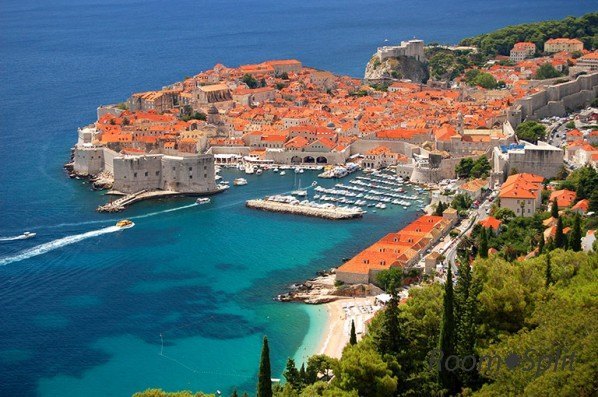 Every season gives Dubrovnik a particular enchantment: during the warm days of the summer the city is crowded with tourists eager to see all the monuments and the mild winter provides a wide range of possibilities to enjoy the city.
Every season gives Dubrovnik a particular enchantment: during the warm days of the summer the city is crowded with tourists eager to see all the monuments and the mild winter provides a wide range of possibilities to enjoy the city.
Green Mediterranean landscapes, the blue shine of the Adriatic sea, white rocks of the coast enriched by fragrance of the aromatic herbs, millenary gardens, the aquarium with the msot interesting examples of the SeaWorld just opposite to the magnificent cultural heritage of the city stand to enhance the beauty of this unique city.
One of the most fascinating monuments of Europe are Dubrovnik’s city walls which encircle the city in a form of an asymmetric hexagon following the natural formation of the coast with the tower of Minceta on the highest point at north-eastern corner of the city and the tower of St. John standing by the sea, on the south-eastern side of Dubrovnik. City wall has been constructed from XIII to XVII century for the needs of defense.
The wall is 1940 m long and 25 m tall, the wall facing the sea is 15,-3 m large and the one facing the mountain is 4-6m large. The city wall has been reinforced with four towers each one standing on one side of the world. The city of Dubrovnik has been put on the UNESCO World Heritage list in 1979.
The wealth of the city of Dubrovnik has always depended on maritime foreign trade. In the Middle Ages Dubrovnik became a Republic and as such was the only city-state on the eastern Adriatic coast, a true rival for the great Republic of Venice. Due to the wealth fare and diplomatic relationships the city of Dubrovnik gained an extraordinary level of development particularly during the XV and the XVI century.
Dubrovnik has always been one of the most important centres where Croatian language, literature and culture were developed. Many important Croatian poets, writers, dramatists, painters, mathematicians, physicists and other scientists lived and worked in Dubrovnik. The city of Dubrovnik is a stage for a very rich social and cultural life, it offers a festival called ‘Dubrovnik Summer Games’, St. Blaze Celebration, Music Festival “Julian Rachlin and Friends”, Film Festival ‘Libertas’, Dubrovnik international film festival and many other events.
Peculiarities:
In 1296 the Republic of Dubrovnik built one of the first drainage-systems in all the world and it is fascinating that those tubes are still in use. The pharmacy in the Franciscan monastery of Dubrovnik has been constantly functioning since the year 1317 until today and it was the third pharmacy built in the world.
The first quarantine in the world was built in Dubrovnik in 1377. Quarantine is a place were people arriving from distant countries used to be secluded for a certain period necessary to discover if they were bringing any disease or they were healthy and safe for the entrance to the city.
On 27th of January 1416, Dubrovnik signed the regulation of prohibition of slave trade and of slave transport which presents the first prohibition of slavery in Europe. The orphanage founded within the monastery of St. Clara in 1432 was one the first institutions of such type in whole the world.
During the construction of the Minceta Tower in 1464, there was not enough stone so it was ordered by law that anyone coming to the city from north and south should bring with him one stone, the biggest one according to one’s physical constitution.
Arboretum Trsteno near Dubrovnik was founded in the XV century and it is the oldest arboretum in the world. Two oldest plants have more than 400 years.
Giovanni Angelo Medici from Milan, Italy was the archbishop of Dubrovnik from 1545 to 1553. He became the Pope on 6th of January 1560 under the name of Pio IV. His successor, the Pope Pio V. was the one who recognized the Republic of Dubrovnik. Dubrovnik maritime law on the assurance („Ordo super assecuratoribus“, 1568) is the oldest assurance law in the world.
Nautical fleet of the Republic of Dubrovnik in the XVI century had approximately 40000 sailors and more than 180 huge ships and it was among the strongest fleets in the Mediterranean. In the works of William Shakespeare: The Merchant of Venice, the word “argosy” can be found meaning “a ship from Dubrovnik”.
The Republic of Dubrovnik was the first state in the world to recognize The United States of America in 1783.
Ljudevit Gaj and Ivan Mazuranic stayed in Dubrovnik for 25 days in the year 1841. Gaj called Dubrovnik an ‘Illyrian Parnasus“. Afterwards, the Illyrian movement and Ljudevit Gaj chose the language used in the writings of Ivan Gundulic ( a famous writer from Dubrovnik ) and other writers from Dubrovnik, as a base for standard Croatian language and Ivan Mazuranic finished the verses of Gundulic’s unfinished epic poem “Osman”. Irish dramatist George Bernard Shaw said :“ All those who are seeking the Paradise on Earth should come to see Dubrovnik.“
River Ombla provides water to the city of Dubrovnik with an aqueduct only 30 m long and it is one of the shortest riveres in the world.
The late Pope John Paul II. Visited Dubrovnik on the 6th of June 2003. He drove through the main street, Stradun in his papa mobile, he served a Holy Mass for 60000 pilgrims at the Gruz harbour and on that occasion he beatified Marija Petkovic.
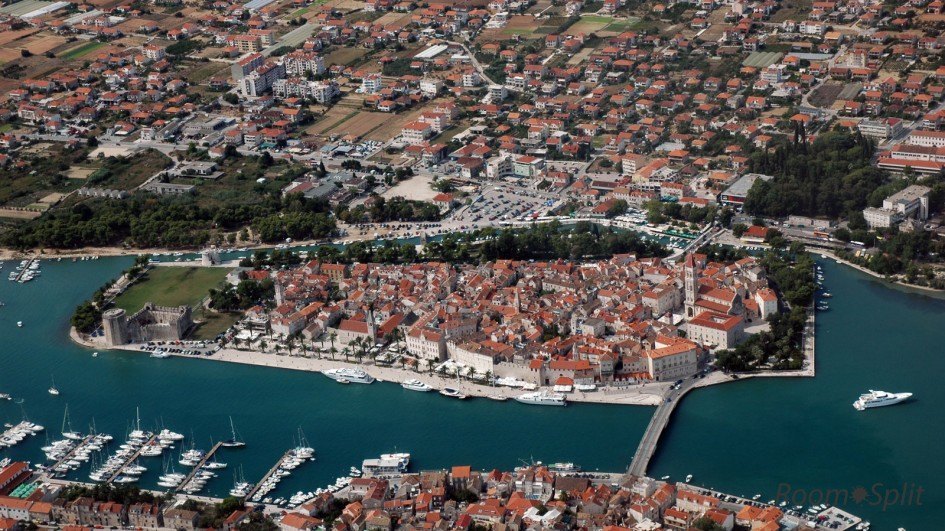
Trogir is much more than just a touristic attraction where people from all around the world come to enjoy the sea and the sun, its primary importance and beauty lie in its cultural and historical heritage. It was founded before Christ by Greek colonists but this small town from Hellenic period grow up during its long history into one of the best preserved Romanic and gothic towns in Europe. The city fortress with its towers surrounded by the city walls present the historical core of Trogir which has been included in the world’s historical and cultural heritage under UNESCO protection.
The streets of this small town follow the original roman construction but during the centuries the rulers of the city continued to build many representative, both public and private, palaces and fortresses in different artistic styles. The most interesting part of this cultural heritage is to be recognized in a numerous Romanic churches whose original style has been enriched with ornamentations, paintings and sculptures from renaissance and baroque period. The most important monument in Trogir is St. Lawrence’s Cathedral with its famous western entrance, a work of master Radovan, it is a masterpiece of Romanic and gothic art considered to be the most beautiful and the most important monument of the medieval period in Croatia.
Many kings have been fascinated by this small town entirely built in white Dalmatian stone which gave it such an extraordinary beauty. This beautiful pearl of the Croatian Adriatic continues to fascinate today even more than it used before so it is more than probable that, while you are walking through its narrow streets, you suddenly encounter some well known face from the world’s jet set who just love to enjoy the beauty and the harmony of this monumental place. It is not possible to define if it is because of its beautiful palaces and the feeling of eternity while you walk through those streets which watched the entire history pass through them but it is certain that everybody who comes to Trogir gets a glance of royalty.
There are many ‘konobas’ (Dalmatian tavern where you can taste traditional specialities) in Trogir famous for their exquisite cuisine based on fresh fish which is daily caught around the islands Drvenik and Krknjasi, two islands well known not only for the highest quality fish but also for their wonderful sand beaches. From Trogir tourists often choose to visit one or more islands in its surroundings easy to reach by daily ferry connections or you can just drive to the island of Ciovo which is connected to Trogir by bridge.
It is our pleasure to offer you excursions in a traditional wooden ship all up to the north-eastern side of the Drvenik Veli island passing between the main islands and two separate islands of Krknjasi chain. Among the island Krknjas Veli and the island Krknjas Mali and Veli Drvenik there is a Krknjasi harbour. Besides an amusing ride on the boat, you will certainly enjoy in the beauty of an untouched nature and in the submarine rich flora and fauna, but if you really want to treat yourself with something special, then you will adore the possibility to taste some of gastronomic specialities of Dalmatia.
In other words, a one day excursion to the islands includes a tasting of authentic Mediterranean cuisine based on fresh fish grilled on olive wood and on the branches of old wine wood. Also, all the fruit and the vegetables served on this day trip are grown in a bio-ecological production and the wine is homemade, deriving from the grapes grown on the very same wood on which your fish will be grilled.
For all those who would like to experience the freshness of the glorious morning silence while watching the shiny drops falling from the boat, in collaboration with the local fishermen, we organise a trip during which you get to know and to try to throw the nets and to fish.
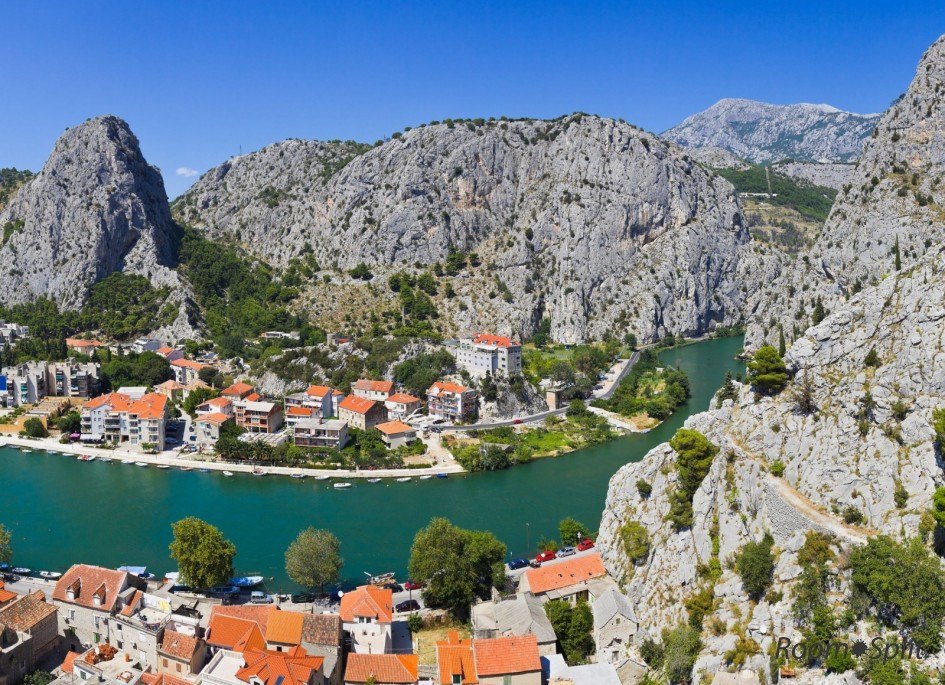 Only 25 km from Split is the small town of Omis situated at the mouth of the river Cetina. Cetina, an artist, drew a beautiful picture in the landscape of this area, and let all who wish to enjoy the adrenaline rafting on its waterfalls. A part of this beautiful river is known Radmans grinders, where vacationers and groceries guests can taste specialties of freshwater fish.
Only 25 km from Split is the small town of Omis situated at the mouth of the river Cetina. Cetina, an artist, drew a beautiful picture in the landscape of this area, and let all who wish to enjoy the adrenaline rafting on its waterfalls. A part of this beautiful river is known Radmans grinders, where vacationers and groceries guests can taste specialties of freshwater fish.
Above the canyon there is an extraordinary konoba Flintstones, owned by a family that designed it as the eponymous animated film, with an abundance of indigenous gastronomic treasures, along with Poljički specialties.
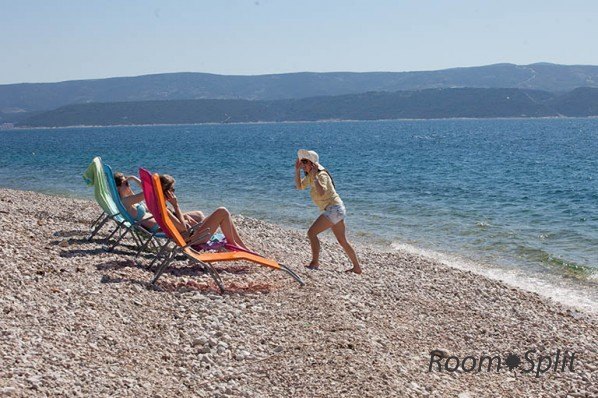
Small fishermen village of Stanići is situated at a half way between Makarska and Split and it is perfect for holidays if you want to enjoy your private beach. The village is located under the slopes of the Omiska Dinara Mountain and it gives the most wonderful view of the crystalline sea which, embracing the blue sky, fills you with such sublime feelings that sometimes it really feels to be one some other planet. Far away from a busy city traffic, crowd and worries, this nice little piece of paradise is a perfect place for relax and for oblivion of everyday anxiety.
There where the sea waves meet the marvelous white beaches the Biokovo National Park rises to protect one of the most brilliant pearls of Adriatic Sea: the wonderful village of Brela. The astonishing beauty of Brela’s seaside has been described by many famous poets and the village is righteously pride of one of the most fascinating beaches on the Adriatic coast.
On the Forbes’ scale the beach in Brela has been positioned as the sixth most beautiful beach of the world. Brela is unique also thanks to the variety of entertainment it offers. Families with children can enjoy the shadow of the dense pinewood listening to the waves washing the beaches where children can rejoice in playing on the beach or in the sea.
To those guests who are seeking more active vacations Brela offers all the necessary infrastructure to indulge their needs such are grounds for tennis, handball , basketball and many water sports. People looking for fun just love the so called ‘Fishermen Nights’ (‘Ribarske noci’) which are often organized at Brela but also in the nearby town of Makarska famous for its numerous discos and night clubs.
The specialty of gastronomic offer in Brela is the great variety of dishes based on a highest quality fish, seafood and wine. All around Brela nice, intimate, family run ‘konobas’ (typical Dalmatian taverns) can be found and all of them invite us to try some of their great cuisine difficult to resist.
Thanks to its geographical position to all those in search of adventure the mountain of Biokovo offers both the more challenging and the relaxing pathways in nature where you can enjoy an amazing day excursion or even a few days trip in a discovery of all the beauties of the National Park. From all around the world people come to experience the magnificent beauty of the Biokovo Mountain.
Mountain of Biokovo boasts also an exceptional richness of flora and fauna where it is not unusual to encounter a buffalo, by law protected animal species just as lots of other rare animals. The highest top of Biokovo, St. Jure ( 1762 m ) is worth conquering if not for anything, than for the breathtaking view it provides, the spectacular picture of the nearby islands, the impressive coast and the sea under the mountain.
In Brela, there are everyday fast boat lines which will take you to the islands of Hvar and Brac and to Vruja, famous for its fresh water springs.
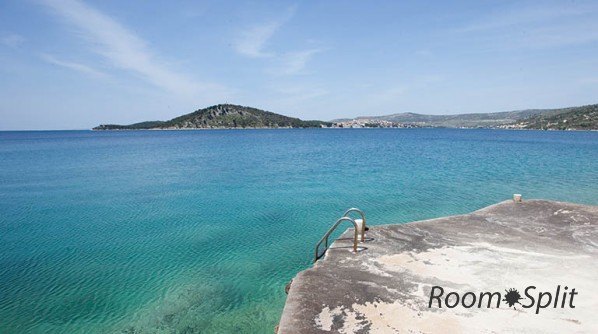 Ražanj is a small fishermen village whose inhabitants live in a profound relationship with the sea and the olive trees on which their lives have always depended. Every night tiny boats sail into the sunset and they never came back before the sunrise with their nets full of fresh fish. Ražanj gained a high level of popularity due to this calm atmosphere, its natural beaches and the clean sea which have still not been discovered by a great number of tourists thus providing a peaceful place for relaxing vacation.
Ražanj is a small fishermen village whose inhabitants live in a profound relationship with the sea and the olive trees on which their lives have always depended. Every night tiny boats sail into the sunset and they never came back before the sunrise with their nets full of fresh fish. Ražanj gained a high level of popularity due to this calm atmosphere, its natural beaches and the clean sea which have still not been discovered by a great number of tourists thus providing a peaceful place for relaxing vacation.
During the summer few special evenings, so called ‘fishermen nights’ are organized in the central part of the village and these events provide a perfect occasion for tasting typical dishes which are all based on fish and aromatic homemade wine.
Just above the village of Ražanj a mountain Movar rises and on the top of it you can visit the Fortress built by French soldiers in 1860 although some ruins are standing to prove that probably on the same spot another fortification was built in ancient times. The view from the Fortress is absolutely amazing, not only that the astonishing beauty of the sea, the islands and the coastline are magnificent but on the sunny bright days even the Italian coast can be seen giving you the feeling of an extreme beauty.
Only two words could properly describe what everyone feels once on the top of the mountain of Movar: UNTERMINABLE BLUE SKY AND THE BLUE SEA. While enjoying this magnificent view it is very probable that you will notice groups of dolphins playing joyously on the sea surface. Spending a day of your vacation on climbing to Movar Mountain is something that you just have to do in order to complete your holidays.
There is another famous mythical place situated at only 1 km from Ražanj, that’s Punta Planka.
That spot is the most exposed part of the Croatian coast of Adriatic, it is the place that separates the Croatian coast in two geographical, a place units where two of the strongest winds meet: jugo and bura, the first blowing from the south and the former coming from the north. Lots of legends are connected to this particular place. One of the legends narrates that in the remote times sirens used to lie on the rocks of this horn while they were singing to the sailors. There is another legend telling that in the year 1062 the bishop Ivan from Trogir on this same spot saved the shipwrecked sailors by walking on the sea and calming the storm for the ship to pass safely.
To honor the Blessed bishop Ivan of Trogir, in 1331 on the Ploca Horn, the aristocracy of Trogir financed the construction of a church on the rock at just 10 meters from the sea. The church was named as a Church of St. John and it has been perfectly preserved till today. Partly thanks to the legends and partly thanks to its unique climatic position and predominantly because of its astonishing harmony between the sea, the sky and the land, this wonderful place does not leave anyone indifferent. On the contrary, this is the place, which will conquer your soul with its magnetic attraction.
Zmajevo Oko ( Dragon’s Eye)
In the surroundings of Ražanj there is another natural phenomenon which also presented a basis for another legend. At only 2 Nm or 7 km from Ražanj lies a wonderful gulf of Rogoznica and a small town with a lake called Zmajevo oko (Dragon’s Eye). The lake is filled with seawater and it represents a natural bio reactor in which intense bio chemical processes constantly take place. Every 10 years all the life, animals just as vegetation,in the lake perishes and the lake changes its colour: from its normal shiny blue colour it transforms into the sulphuric green nuance. This phenomenon is caused by global climatic changes, which in this case are resulting in a greater concentration of sulphur.
There is an interesting legend about the lake of Zmajevo Oko: once upon a time, in the ancient Greece, in Rogoznica, a mighty dragon called Murin was the owner of life and death. The dragon had such a power that flowers grow out of the stone if he only looked at the stone, when he set up to the sea for fishing, the fish would jump out from the sea to fulfil his desire. All the lands near Rogoznica, which were under Murin’s protection, have been always in peace, spared from wars, hunger and diseases because the dragon’s power was well known all around the world and nobody dared to challenge the dragon.
The inhabitants had to pay for their peace by bringing once a year the most beautiful virgin in all the land to be the dragon’ s wife. The legend narrates that no girl ever survived the first wedding night. One year, a brave young man called Aristoles famous because of his winged white horse felt in love with the most beautiful girl in the village, Lucija, who was promised to be that year’s offer to the dragon.
After the girl was taken to the dragon, Aristoles challenged Murin to duel, the battle for life or death. The battle lasted from the noon that day until the sunset. In the sunset, the young man speared directly to the heart of the dragon. Deadly injured dragon at the beginning thought that he was dreaming, but when he realized he was dying, feeling a tremendous ain, he started to curse the lying gods, the world and his mother Hera because he finally understood he was not immortal.
Dragon’s despair was so vast that with his last strength he took out his eyes. The first eye he tore out, he threw so far away that flew through the half of the Adriatic sea and at last it felt far beyond the island of Mljet digging so deep the hole that today it is the deepest spot in the Adriatic. Murin the dragon had no more strength so he pulled his other eye but it felt just under his feet, in the same place where the battle took place. When the dragon’s eye felt on the rock it melted the rock opening a huge hole where instantly a storm took place and the seawater filled the hole thus giving birth to the lake.
The legend says that those couples who have a swim in the lake remain always happy together and their love lasts forever. Young girls can often be seen as they walk in the sunset to the lake just to have a bath in the lake. Near the Zmajevo Oko Lake, precisely in the bay of Soline, a modern marina has been built. The marina called Frapa is one of the biggest in all the Adriatic coast, it offers more than 400 places for yachts but what makes it specially inviting is not only its beautiful location but also a great variety of services it offers.
In the close proximity of Rogoznica lays Primošten, one of the most famous towns on the Croatian coast. It is a magnificent small town built on the peninsula. It is said that Primošten is one of the most brilliant pearls of the Adriatic coast. This wonderful place is famous not only for its crystalline clean sea, beautiful beaches and the Mediterranean atmosphere but also because of one of the biggest and most refined disco clubs in Dalmatia, Aurora disco.
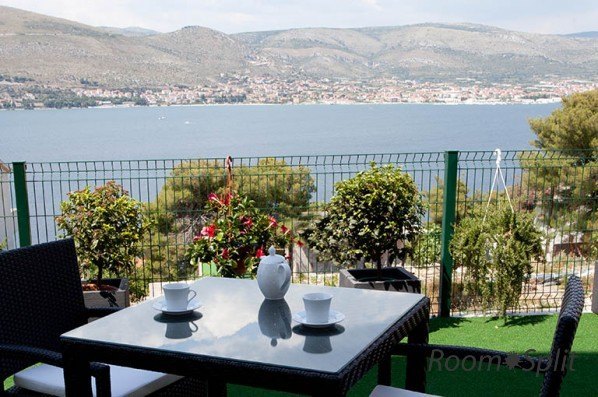 Čiovo is an island situated in the central Dalmatia, connected to the town of Trogir by a drawbridge. On its 28,8 km of surface, several villages are situated: Okrug Donji, Okrug Gornji, Arbanija, Slatine, Zedno, Čiovo.
Čiovo is an island situated in the central Dalmatia, connected to the town of Trogir by a drawbridge. On its 28,8 km of surface, several villages are situated: Okrug Donji, Okrug Gornji, Arbanija, Slatine, Zedno, Čiovo.
Southern coast of the island is practically deserted and abounds in wonderful beaches.
Since the island of Čiovo is a kind of a continuation of the town of Trogir it also offers a great possibilities not only for relaxing vacation but also for recreation, adventure and visits to numerous historical and cultural monuments in the region. Mediterranean vegetation, archipelago full of small deserted islands, nice climate and beautiful beaches in the hidden bays make Čiovo a perfect place for great holidays.
Every visitor to the island of Hvar falls forever in love with its astonishing godlike beauty.
If you want to feel the true natural beauty of Hvar we organize the excursion during which you will be invited to participate in harvest of two typical plants: lavender and olives. For lavender is said to be the magical plant with thousand faces, it is used in cosmetics, medicine and for hygienic products. It is often referred to as an aphrodisiac.
It is also narrated that the Egyptian queen Cleopatra used the lavender water to seduce the most important roman emperor Julius Cesar. Olives are usually harvested in September and that is an experience that you will never forget. In that period all the olive fields are crowded, singing comes from every corner and every day the harvest ends with a typical grill in relaxed atmosphere.
If you are looking for an adventure we will organize for you a jeep safari around the island, an excursion which will give you an opportunity to discover hidden old typical villages of Hvar. If you want to explore the nearby Islands of Pakleni the best way to it is to rent a jet ski or a rubber dinghy.
Everything you desire on your holidays you will it here: night life of a cosmopolitan town, boat excursions, wonderful sand beaches, a conjunction of antique and modern, a drive through the lavender fields, jet ski safari, kayaking, flying with a parachute , diving, tuna fishing, motor safari. Hvar has also a small airport near Stari Grad and the island of St. Clement has a heliport.
The success of tourism on the island of Hvar has been recognized by all the prizes the island gained including the recognition to be one of 5 most desirable touristic destinations of the world.
Hvar is also known as island of lavender. The lavender oil is largely used in a production of perfumes and cosmetics. Lavender flourishes during June, July and August and in the period all the island is colored in violet nuances. The island of Hvar is the island with the greatest number of sunny days in Croatia and it proudly wears the title of one of the most beautiful islands in the world.
Hvar is famous for it particular geographical position, for its richness cultural and natural monuments. The never ending fields of aromatic lavender, rosemary, grape-vine and olive trees… Hvar is simply a magnificent place which fascinates everybody with its unique beauty.
The modern name of the island is a derivation of the Greek word ‘pharos’ which means ‘the lighthouse.’
Stari Grad is the oldest town on the island and it is among the oldest towns in all the Europe. It has been founded by the Greek colonizers in the year 385 BC and it had the status of a free state.
The island of Hvar is famous for its Mediterranean climate with mild winters, shiny warm summers and a great number of sunny hours. The tradition of the island is that when tourists found themselves in one the hotels on the island while it is snowing, they win a free hotel accommodation.
Hvar is mostly covered with pinewood which gives it a special atmosphere and with grape-vine which gives up to 50,000 hl of vine per a year. From Hvar through Brusje, all up to Grablje, there is a bicycle pathway.
Milna
Milna is a typical small Mediterranean village situated on the southern side of the island of Hvar, at 4 km distance from the town of Hvar. There are four broad gravel beaches in Milna, the sea is a genuinely crystalline and the restaurants where you can enjoy in traditional Dalmatian specialties successfully encircle the feeling of pure enjoyment.
Brusje
Brusje is a village at 6 km east from the town of Hvara. Originally it used to be a shepherds’ village, afterwards it was transformed to a village of agriculture famous for production of wine, olive oil, rosemary oil and honey. Today, Brusje is a kind of suburb of the town of Hvar and a favourite place for all those who want to experience the authentic village style of life on the island.
Veliko Grablje
Veliko ili Velo Grablje is a village at 11 km east from the town of Hvar. Once it used to be a prosperous and wealthy village where hard working people lived and produced an exquisite vine, olive oil and honey but mostly it was famous for the biggest production of lavender roil in all the Europe. Today the village is almost totally abandoned, it counts just a dozen permanent inhabitants sine the majority of its inhabitants moved to the town of Hvar in the last decades. The saint patrons of the Grablje village are St. Cosmo and Demian celebrated on the 26th of September.
Zaraće
Zarace is a long bay with vast gravel beaches. Those who love the beauty and the colourful diversity of the sea world in this bay will enjoy an unforgettable exploration. The beach is wonderful and the nearby restaurants offer excellent fish specialities. It is possible to reach Zarace both by boat from Hvar or by a car.
Pribinje
Pribinje is a wonderful bay situated at 3km north of Hvar, near the Vira camping and only a few houses stand in the whole the area. The sea in this bay is crystalline clear and the coast is protected from winds representing thus a perfect harbour for sailing boats who often stop by to enjoy one of many specialties offered in a fish restaurant situated at just few meters from the sea.





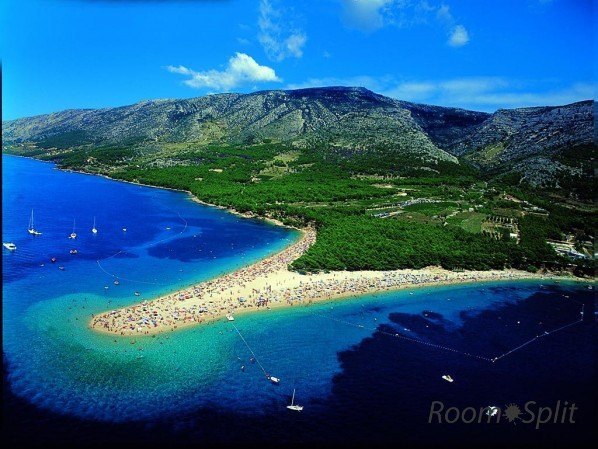 If we had to choose the main highlights which describe the region of Dalmatia that would be the white stone, the sun and the sea. The island of Brač is that but also much more of it. For the famous stone of Brač is said that by labouring it you do not steel its essence but you liberate and discover its millenary soul. The first historical traces of buildings made of the stone from Brač take us up to the 3rd century when the Roman emperor Gaius Aurelius Diocletianus decided to construct the gorgeous residence: Diocletian’s Palace in Split.
If we had to choose the main highlights which describe the region of Dalmatia that would be the white stone, the sun and the sea. The island of Brač is that but also much more of it. For the famous stone of Brač is said that by labouring it you do not steel its essence but you liberate and discover its millenary soul. The first historical traces of buildings made of the stone from Brač take us up to the 3rd century when the Roman emperor Gaius Aurelius Diocletianus decided to construct the gorgeous residence: Diocletian’s Palace in Split.




